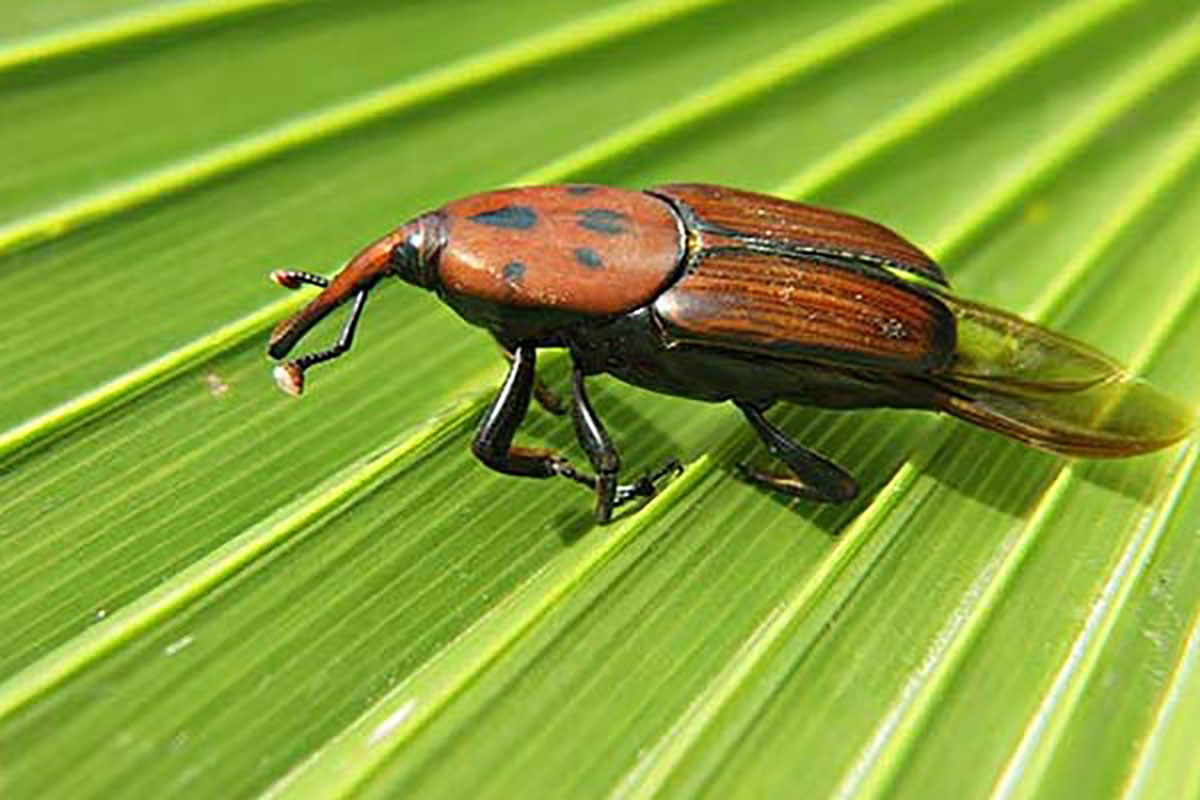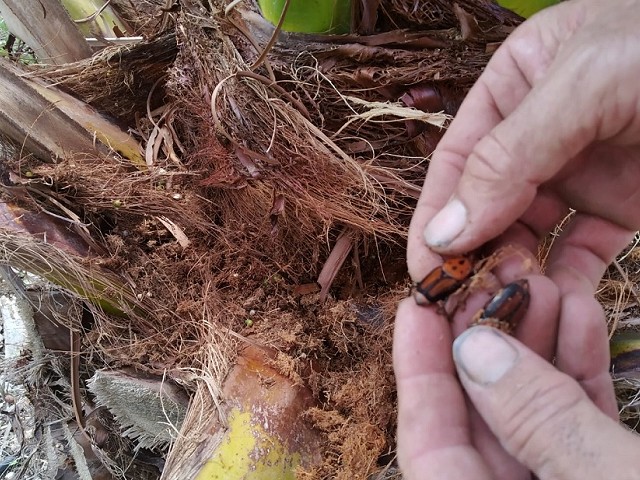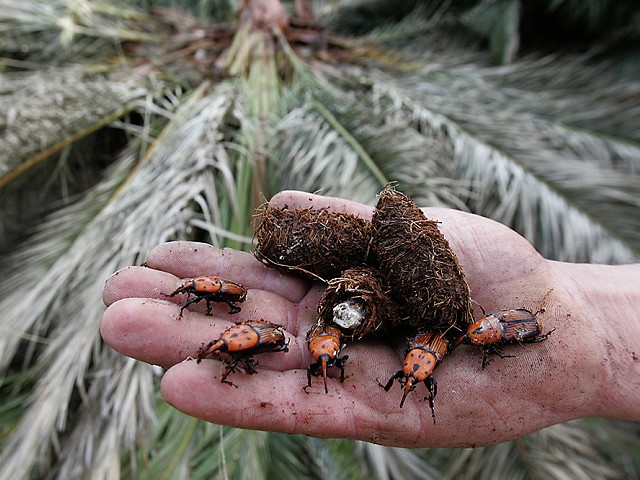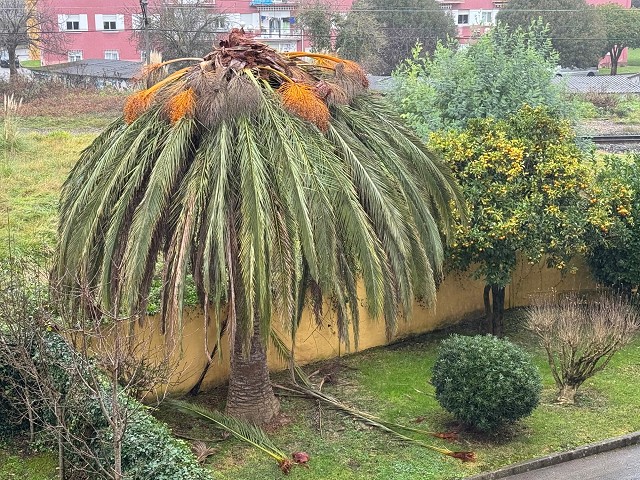The Red Palm Weevil: The Silent Enemy of Palm Trees
The red palm weevil (Rhynchophorus ferrugineus) is one of the most devastating pests for palm trees in warm regions such as the Mediterranean coast. This beetle, native to Asia, has posed a challenge to gardeners, landscapers, and local councils due to its ability to completely destroy trees of great ornamental and ecological value. In this article, we explain what it is, how it acts, how to detect it and what measures you can take to protect your garden.
What is the red palm weevil?
The red palm weevil is an insect of the Curculionidae family, easily recognisable by its size (it can reach 5 cm) and its reddish colour. However, the real problem is not the adult beetle, but its larvae. These develop inside the trunk of palm trees, where they feed on soft tissue, causing irreversible internal damage.
What effects does it have on palm trees?
The first symptoms are difficult to detect, as the damage begins inside the trunk or at the base of the leaves. Among the most common visible signs are:
- Central leaves that collapse or fall off.
- Holes in the trunk or the presence of frayed fibres.
- Gummy or foul-smelling exudates.
- Chewing noises inside the tree.
- Presence of cocoons or the beetles themselves.
- If action is not taken quickly, the palm tree can die in a matter of weeks.
Treatments against red palm weevils
The fight against red palm weevils requires a combined and constant approach. Some of the most commonly used solutions are:
- Chemical treatments: through injections into the trunk or periodic spraying. These require authorisation and must be applied by professionals.
- Plant endotherapy: a technique that introduces insecticide directly into the tree's vascular system, which is more effective and environmentally friendly.
- Pheromone traps: used to capture adult specimens and reduce their reproduction.
- Preventive and controlled pruning: avoiding cutting during the insect's flight season (spring and autumn) and properly sealing wounds.
- Recommendations for dealing with red palm weevils
Check palm trees regularly, especially those of the Phoenix genus, which are the most vulnerable.
- Hire professional inspections at least once a year.
- Avoid unnecessary pruning or pruning without technical supervision.
- Do not transport infected pruning debris, as it can spread the pest to other areas.
- Report any suspected infestation in public or private spaces to the local council.
Conclusion:
The red palm weevil poses a serious risk to the plant heritage of our cities and gardens. Prevention, vigilance and swift, professional action are the keys to stopping its spread. If you have palm trees on your property, don't ignore them. Protecting them means preserving beauty, history and biodiversity.
Would you like to know if your palm trees are safe? Contact us and we will advise you. Our gardening and landscaping team, which works in Dénia and throughout the Marina Alta, will be able to analyse your palm trees and advise you.
Translated with DeepL.com (free version)



